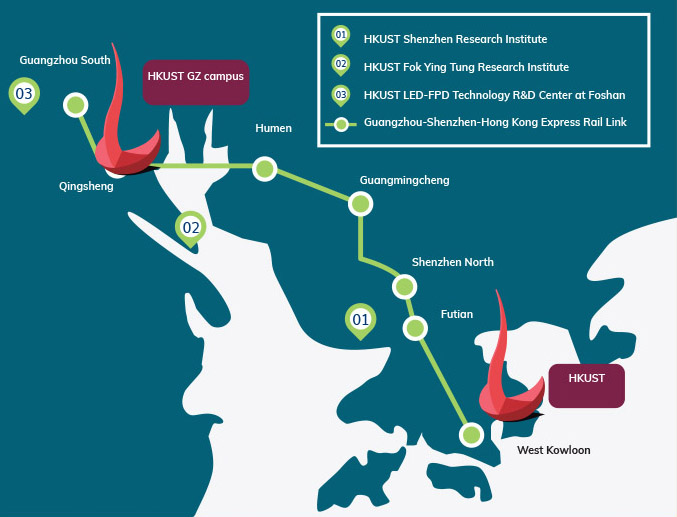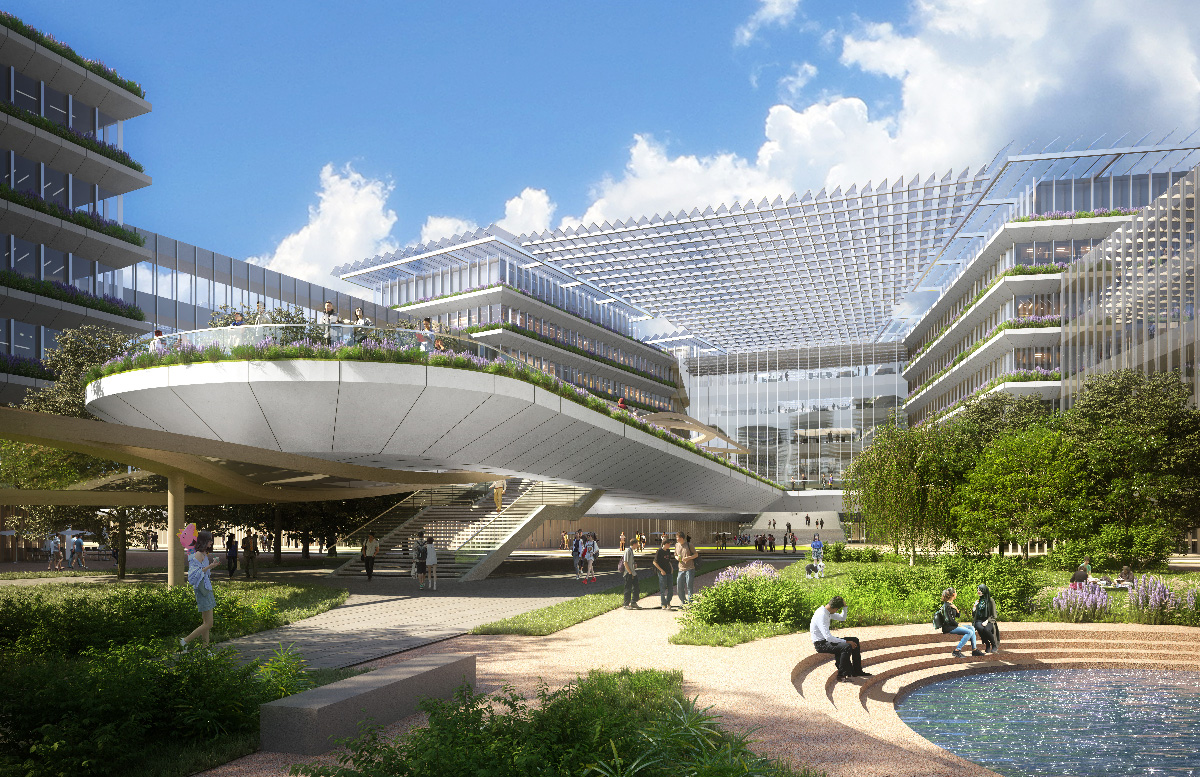

The Hong Kong University of Science and Technology has been given the go-ahead by the State Ministry of Education to establish The Hong Kong University of Science and Technology (Guangzhou) (HKUST(GZ)). Named this year as the World’s Top Young University 2020 by the Times Higher Education, and ranked number one in Greater China in terms of Global University Employability, HKUST will now be able to provide even more first-class opportunities to students as well as impacting technology innovation and industrial development in the Greater Bay Area and Mainland China more broadly.
Site Specific

The new smart green campus, which will span 1.1 square kilometers in Nansha, just south of Guangzhou, seeks to complement the existing Clear Water Bay site.
Taking Shape

Where the current campus supports applied science/research and basic science/research with a conventional set-up of individual schools of Engineering, Science, Business and Management, and Humanities and Social Science, the approach in Guangzhou will be more holistic and encouraging of enquiry-based cross-disciplinary active learning between the two campuses.
The non-conventional structure designed for HKUST(GZ) incorporates four interconnected academic hubs — Function, Information, Systems and Society – that complement the four Schools or academic pillars established by the Clear Water Bay campus. Each Hub has specific thrust areas.
Function Hub
Advanced MaterialsEarth, Ocean and Atmospheric Sciences
Microelectronics
Sustainable Energy and Environment
Information Hub
Artificial IntelligenceComputational Media and Arts
Data Science and Analytics
Internet of Things
Systems Hub
Bioscience and Biomedical EngineeringIntelligent Transportation
Robotics and Autonomous Systems
Smart Manufacturing
Society Hub
Financial TechnologyInnovation, Policy and Entrepreneurship
MBA+
Urban Governance and Design
Creating Connection

HKUST(GZ) will deliver the same high academic standards of its Clear Water Bay counterpart, but the University’s structure ensures that no degree programs are duplicated. The aim is to create complementary campuses to allow for knowledge transfer and collaboration. All central research facilities, research institutes and academic programs on the respective campuses will be made available to members of the other.
The hope is also that the opening of HKUST(GZ) will strengthen and nurture the connections between Hong Kong and the Greater Bay Area. The new campus, which is just 30 minutes by train from the Hong Kong West Kowloon railway station to Qingsheng station, is also close to the University’s already well-established research platforms in Nansha and Shenzhen, as well as its Research & Development Center in Foshan.

Starting Strong


